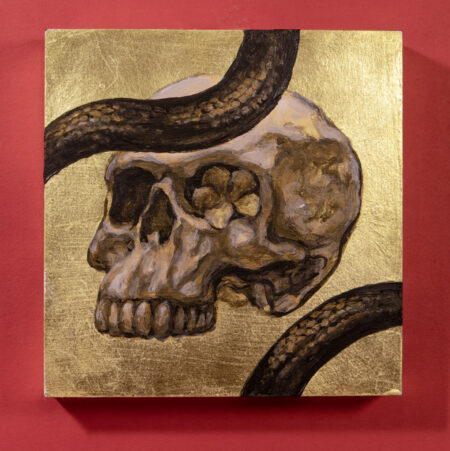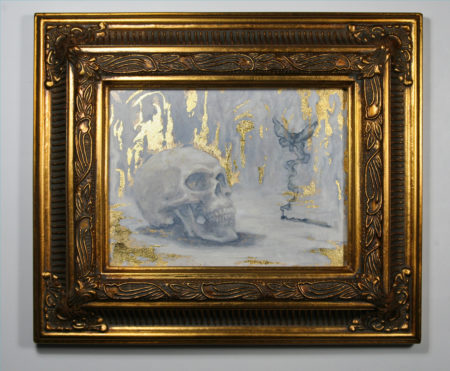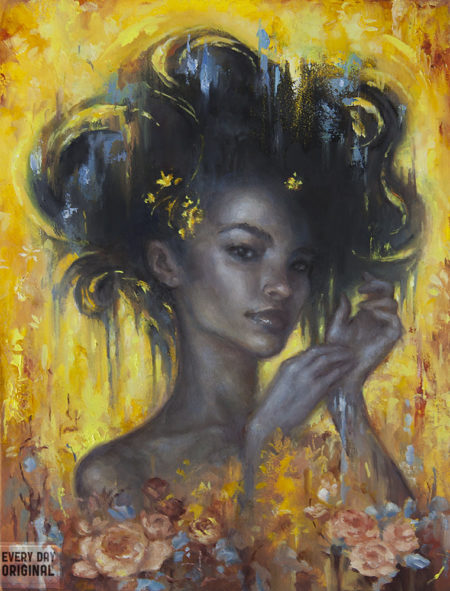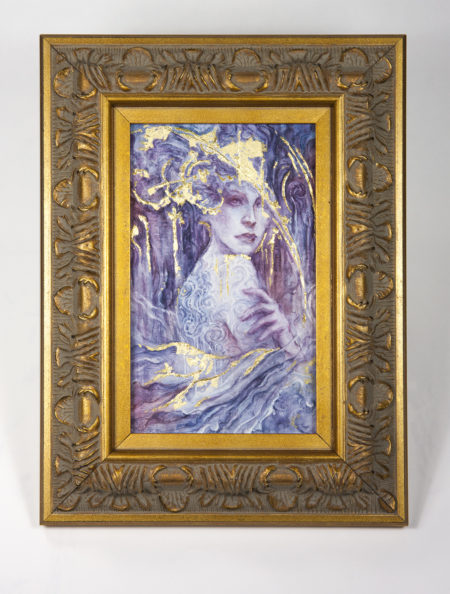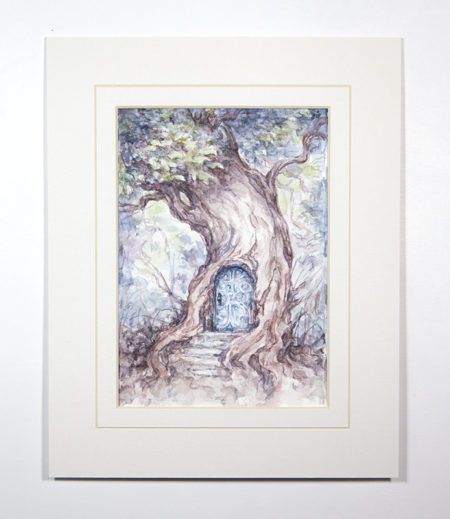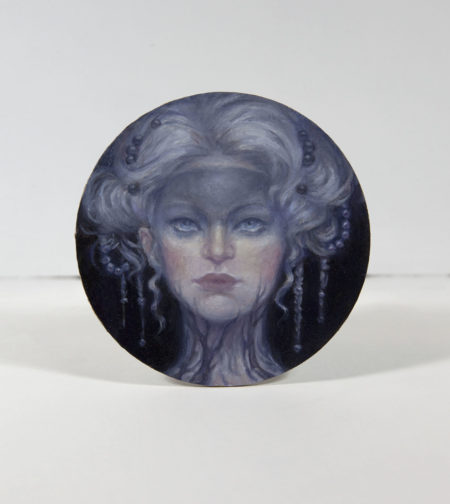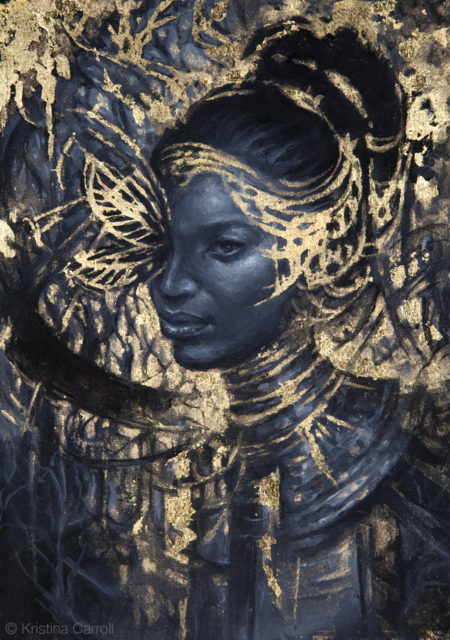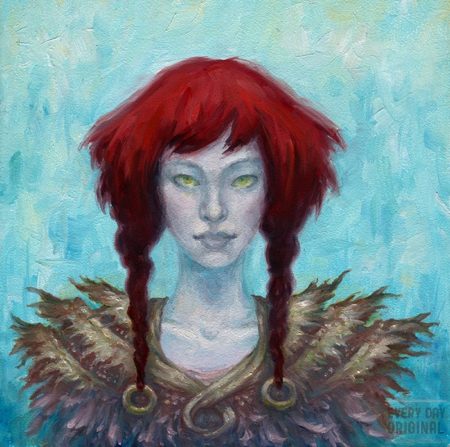Bud Cook creates stunning acrylic paintings, and makes portraits that almost come alive. You can spot a Bud Cook painting miles away because of the luminous color palettes and bold and sculptural brush strokes. Read our interview with Bud, as he talks to us about his works on Every Day Original, process, and his personal creative journey. You can view his entire body of work on his website or follow him on instagram.

1. You can always spot a Bud Cook on social media, no matter the media. Pen, pencil, coffee stains, paint, one look and “Yep, that’s Bud.” You have such a unique voice. How did you find this voice? How would you describe it to others?
Let me start by saying thank you for the opportunity to answer these questions – I’m honored to be asked.
I’ve struggled with this idea for a long time; arriving at a personal visual voice. I love mark making, no matter the medium – so I make and show work with a great variety of styles/approaches, and this can dilute one’s voice, at least in the eyes of the audience. I believe our visual voice is inside of us, waiting to get out. The more art you make, the more defined and unique your voice becomes. Additionally, our visual voice is not concrete, for me it is an ever evolving part of my visual identity. As far as describing it, my friend Tommy Arnold described my figure paintings as a “cleverly abstracted and stylized realism”. Simple and straight to the point, I’ll take it.
2. You have such a specific undeniable Bud Cook color palette too, but rarely the same. How do you determine what kind of colors you will use for a piece?
I like to work with a fairly limited palette. In college, I learned to paint with oils and had a very traditional, earthy palette – today I enjoy buying new colors that I’ve never had before, so I have a wide variety of choices to start with. I’m always working from some form of photo reference, so I let that speak to me a bit regarding how I choose my colors. But I also like to deviate from the reference in that I tend to see colors comparatively – so while the local color in my piece may differ some from the reference, I’m comparing new colors I mix to their difference from the original color (warmer, redder, bluer, etc). I hope that makes sense. For example, if a shadow color looks particularly purple then I will mix a straight-up purple to start with as a base color, and then go from there as the painting progresses. Sometimes these early colors survive through to the end because they work value-wise, if the value relationships are working throughout, then I love to leave these patches of saturated color when I can.
3. You seem to be comfortable with many different media. When starting a  portrait, how do you select the right media for the job?
portrait, how do you select the right media for the job?
With commissions, the media is largely set by the customer – and because most of the portrait work I show is acrylics – that’s what I end up using most often. For personal work and experimental fun stuff, deciding on a medium can be based on my mood, how crazy experimental I’m feeling, whose work I have looked at recently that has blown my mind, stuff like that. I love to play, so sometimes it’s a simple as “what do I have right here that I can paint with now”. My studio is a mess, every new project means clean up and reorganization – not necessarily the way I’d like it to be but it’s a practical constraint. So I may have a bunch of materials out and just decide one night to see what happens when I combine charcoal, gesso and yellow ochre with a brush and a roller. Fun discoveries sometimes, crash and burn sometimes as well.
4. You consistently use acrylics for your paintings. What is it about the medium that resonates with you? Why not oil?
I learned how to paint in college using oils exclusively. My migration to acrylics was another practical decision. My studio is in my basement and I paint standing next to my furnace which has an open flame. I therefore stay away from any flammable materials or anything with dangerous fumes. Having said that, the fact is that the two mediums are just worlds apart, considering dry times, cleanup, blendability – and with the constraints of acrylics I have learned and developed new tricks over the years with the medium to achieve the look I am going for. I would LOVE to get back to oils at some point in the future.
5. You use lots of different surfaces. Why? Do you have a favorite? When you’re going from one surface to the other, how do you think about the shift, are there rules to how you use each?
I mentioned earlier, I love mark-making, and different surface textures can mix with the chosen medium to produce exciting and sometimes unplanned results. For example, when I work with canvas, the texture of that surface will play a much larger role in concert with the paint than a Masonite panel necessarily would. I am very deliberate with what surface I choose when it comes to commissioned work, but love to experiment when making personal work or just playing.
6. What do you mutter to yourself while you paint?
This can get seriously weird, fast. When things are going well, the mutterings are usually positive, but when the work goes awry, or when it is in the ugly mid-stage, that’s when the mutterings can be bad. I try to avoid negativity as much as possible when I’m working, but when it’s all going wrong the pressure builds and I will sometimes let out a single, loud “FUCK”. Then a concerned voice will call down to me “you okay?”, which is returned with a terse “fine”, then the pressure is gone and the corner turned. Most often I will mutter “just keep painting, just keep painting” in the vein of Dory’s “just keep swimming”. That keeps me on course and helps to get me through the tougher stages of a piece.
7. How do you determine what you plan to paint each month for Every Day Original?
So many factors weigh into that decision. What did I sell recently on EDO, that’s a big one – or even what type of work other EDO artists are selling? Not necessarily the subject matter, more like what size piece combined with what material, plus price. Every time I think I’ve got the audience figured out, I’m wrong and the new piece doesn’t sell, back to the drawing board. The object obviously is to sell, and it’s really a bit of alchemy to figure out the perfect formula of subject + medium + size + price, in order to make the sale. Music really motivates me while I work, so I love to paint some of my favorite musicians as subjects. And to appeal to a large audience sometimes I will pick a favorite character of mine from movies as a subject – keeps the work fun, and people can connect in personal ways to the chosen subject and the finished piece.
 8. Does that experience bring anything to your creative voice?
8. Does that experience bring anything to your creative voice?
For sure, just that fact that I have to create a new piece each month – it sounds silly but that’s a good bit of pressure right there to keep me working on new, personal stuff. Every EDO piece is really just another personal piece, not like commissions – really just up to me what I want to paint, so it’s a great incentive to make more work, and like I mentioned previously, this helps to define that personal visual voice.
I’m assuming you use photos as reference for your work, if not then we’re ending this interview and I’m going back to evil-genius school so I can invent a brain swapper.
9. What makes you say “This one, this photo has what it takes to be a Bud Cook?”
Great question, important to me for sure. Sometimes I’ll paint characters from films, a scene that was particularly poignant or that has personally affected me. In this case I generally pick my reference carefully by making just the right screenshot from a film. I almost never find stills directly from a Google search for this type of work, the reference has to capture the exact moment when the emotional impact is there, or when the subject is truly revealed.
When I shoot my own reference for a portrait, I’ll sometime take dozens of photos. The selection process at that point for me quite simply is to find the shot that “is” the person, to me. If I am doing a portrait of someone I don’t know, I will review the reference that has been sent to me and try to identify the one that I feel visually has the most personality.
I feel like the reference has to speak to me in some way in order for me to be truly engaged with the painting. When there is a strong, personal impact from a reference photo then not only do I enjoy painting it more, but also can create a better piece in the end.
10. Why portraiture? Why not dogs or farmhouses? Did any of your past teachers/mentors help you find this focus?
I’ve really only been into painting portraits as personal work in the last few years. There’s a very specific problem to solve with portraiture; get the likeness correct. All the rest can be very personal, but first you’ve got to nail the likeness – I really enjoy that challenge. This focus came with my first solo show in 2014, the show was titled “TRIBE – Portraits of a Community”. I painted portraits of people in my creative tribe; peers, professors from college, mentors and a couple of my role models. It was a good deal of pressure I put on myself, because I was painting about a dozen portraits of my painter friends. It took a little less than a year to create the work for this show, there were about 25 pieces in the show total, but 12 of the pieces were showcased together and were all the same size. It was during this time that my style shifted to a slightly more abstracted approach with the paint and I feel like I turned a corner creatively.
11. You do killer portraits, almost sculptural in quality. The logical question here is “have you ever sculpted,” but I wonder, do you have another job other than art? Have you always?
I have sculpted, but just a handful of times and really just for fun. I met a local sculptor who casts his own bronze pieces right at home and last year I started a project with his assistance, and it has been cast in bronze but has yet to be finished (never enough time for fun side-projects). I really enjoy sculpting, but don’t have as much time to play around with this art form as much as I’d like to.
To answer the last part of that question; up until November of 2013 I worked in the corporate world as a webmaster, graphic artist and multimedia designer/developer. I did that work for a little over 20 years and was largely creatively dormant during that time (paint-wise) – long time in the cocoon, I have wings now.
 12. Could you tell us more about you? What does a typical day look like for Bud Cook? Do you just do art, or is art just part of the picture?
12. Could you tell us more about you? What does a typical day look like for Bud Cook? Do you just do art, or is art just part of the picture?
Coffee, coffee, coffee. I teach during the school year, just one class each semester at Quinebaug Valley Community College, but it takes up a surprising amount of time. I don’t have an organized daily schedule, though I do like to do my communications in the morning with my coffee – and a coffee sketch if I can as well! I am a father, husband, homeowner, pet-owner, etc. – these parts of my life are integral with being an artist now that I am a self-employed freelance artist – so the key to keeping it all together is BALANCE, and that’s a constant challenge. When I have a gallery show on the horizon, then there is a good deal of studio time in my work week. The words “weekend” and “vacation” are not a real thing anymore, not that I’m complaining – integrating work with life is still new to me, but something that I think has way more potential for everyday happiness. And illustration work is in there too, though I am still trying to grow my clients in that area so it’s only a small portion of my work week.
13. You paint and draw quite a few musicians. Does music play a big part in your illustration process? If you can could you describe what the soundtrack of your paintings would be?
I love this question, I can talk about this one all day. Music all by itself moves me deeply – but the combination of music and paint can transport me to another state of mind. There’s no way I could describe a soundtrack of what I listen to, it’s so all over the place. Music is a vehicle for me, it takes anxiety away and can turn a sour mood around 180 degrees. When a specific musician’s work affects me, I feel a strange connection to that person – like they know something about me, or that we have similar life experiences that make their work so relatable for me.
Lyrics especially move me, so I am a fan of the “singer-songwriter: Dylan, Mark Knopfler, Jackson Browne, Natalie Merchant, Indigo Girls, Neil Young, Cat Stevens, Colin Hay, I can’t possibly name enough artists here. Music as mood is important too, so am I looking to be uplifted while I paint, or do I need a darker louder vibe, or do I need someone to really burn me down? The voice, oh man, this is the one that can really send me; Eddie Vedder, Sinéad O’Connor, Chris Cornell, Dolores O’Riordan, Greta Svabo Bech, I seriously can’t begin to mention enough names. I can go on and on – let it suffice that music is transcendent for me.
14. Favorite Album and why.
Pink Floyd’s “The Wall” got me through the high school years; still love that album to this day. Pearl Jam has been my groove since their arrival on the music scene, so final answer; probably Pearl Jam’s “Ten”.
15. Here’s a broad question, where are you taking your work? Where is it going next year, five years, ten?
I’m excited to announce that I just recently signed a contract with an Illustration Agency; Sullivan Moore – and I am looking forward to growing my illustration client list with their help.
I’d like to move toward doing more gallery work. I’m in a 3-man show in September at Krab Jab Studio in Seattle, and another 2-man show next spring in Massachusetts. Alas, the gallery work is wonderful to have, but doesn’t necessarily represent any income – and can even at times mean a loss – but it’s the work that is most my own, so most enjoyable to create.
Paint-wise, I have grandiose ideas about where I’d like to take my work, but it’s never real until I put the brush to the surface. My latest work for the upcoming Krab Jab show is a bit of a departure from my work to date – I’m intrigued with where the work is taking me.

16. Where else other than EDO can people find your work? And buy it?
As I mentioned in the previous answer, I will be in a 3-man show at Krab Jab Studio in Seattle this September, with new paintings that I am currently working on. I also show my work in a local gallery near my home in Northeast Connecticut; the Silver Circle Gallery (http://www.silvercirclegallery.com/). I don’t have a store on my website (http://www.budcookstudio.com/), but always welcome inquiries about purchasing work that appears on the site. My basement is FULL of unsold work, so really any work that I’ve posted on social media or my website may be available.
-

Rolling Thunder
By Bud Cook $475 $475 Read more -

The Batclimb
By Bud Cook $475 $475 Read more -
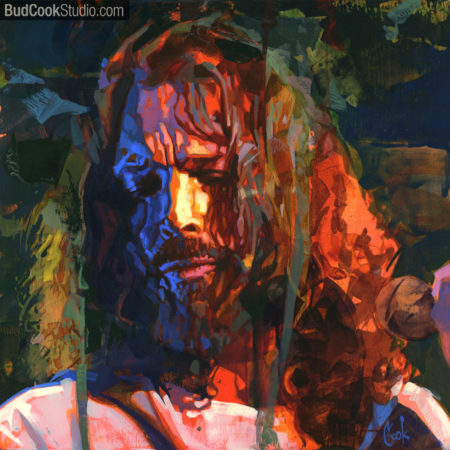
I Am the Highway
By Bud Cook $500 $500 Read more -

Call me Snake
By Bud Cook $500 $500 Read more -

Indy
By Bud Cook $500 $500 Read more -
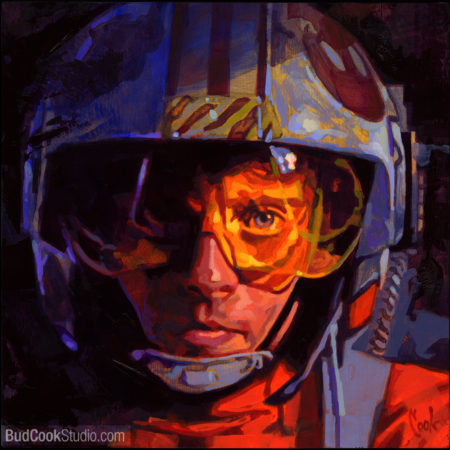
Red-Five Standing By
By Bud Cook $500 $500 Read more -
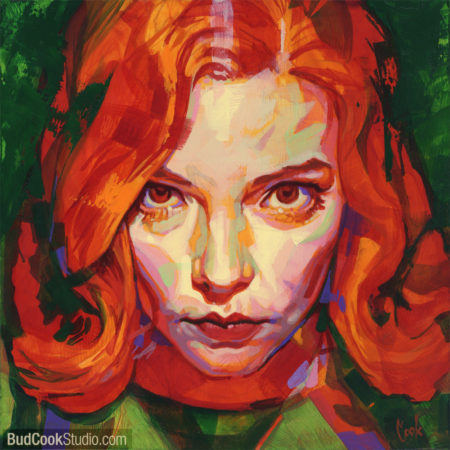
The Queen’s Gambit
By Bud Cook $500 $500 Read more -
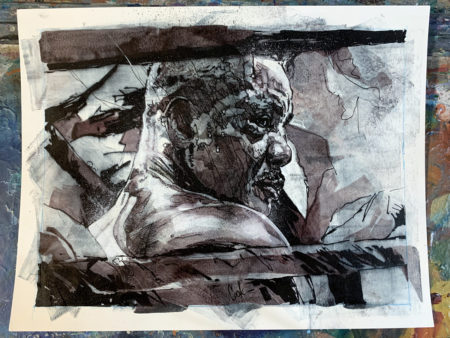
Song for Sonny Liston
By Bud Cook $300 $300 Read more -

Jack Rabbit Slim’s
By Bud Cook $300 $300 Read more -

Inktober Batman
By Bud Cook $500 $500 Read more -

The Dynamic Duo
By Bud Cook $375 $375 Read more -

There is rules
By Bud Cook $500 $500 Read more -

No roots
By Bud Cook $500 $500 Read more -

The Caped Crusader
By Bud Cook $500 $500 Read more -

Today we escape
By Bud Cook $320 $320 Read more -

Hurt
By Bud Cook $320 $320 Read more -

Cardplayer, gambler, scoundrel
By Bud Cook $500 $500 Read more -

Father Christmas
By Bud Cook $500 $500 Read more -

The Handmaid
By Bud Cook $895 $895 Read more -

By example
By Bud Cook $750 $750 Read more -

Stick them with the pointy end
By Bud Cook $500 $500 Read more -

The Fall of Skywalker
By Bud Cook $450 $450 Read more -

This Watch
By Bud Cook $500 $500 Read more -

Luna
By Bud Cook $500 $500 Read more -

Furious Anger
By Bud Cook $500 $500 Read more -

Rachael, 2019
By Bud Cook $500 $500 Read more -

Back in town
By Bud Cook $500 $500 Read more -

The Bright Knight
By Bud Cook $450 $450 Read more -
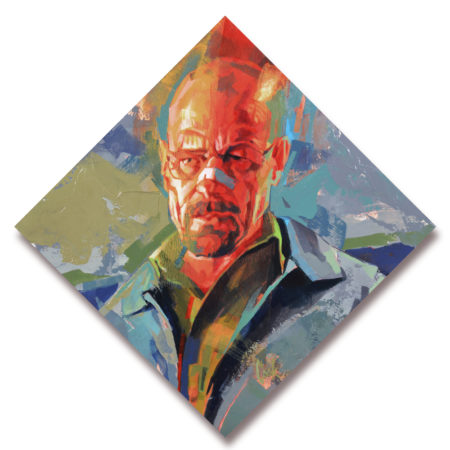
Say My Name
By Bud Cook $400 $400 Read more -
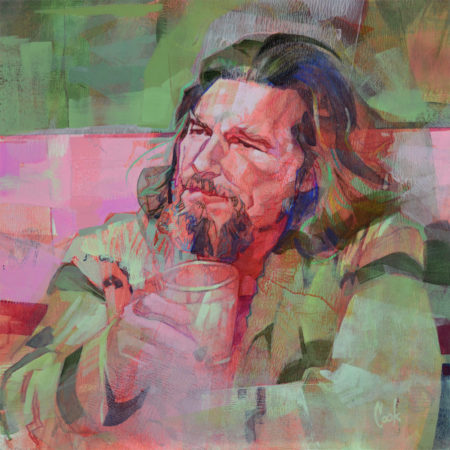
Abide
By Bud Cook $495 $495 Read more -

Everything you can imagine
By Bud Cook $395 $395 Read more -

Wild at Heart
By Bud Cook $450 $450 Read more -

Chewie
By Bud Cook $495 $495 Read more -

The Last Jedi
By Bud Cook $500 $500 Read more -

Study for Liminal
By Bud Cook $450 $450 Read more -

I drink and I know things
By Bud Cook $500 $500 Read more -

MY Batman
By Bud Cook $500 $500 Read more -

Diana
By Bud Cook $500 $500 Read more -
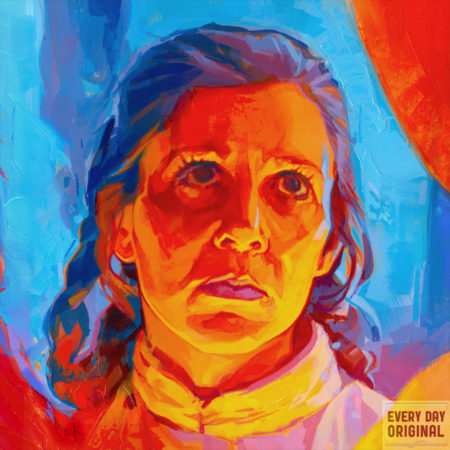
I Love You
By Bud Cook $500 $500 Read more -

It doesn’t look like anything to me
By Bud Cook $250 $250 Read more -

Study for “Present”
By Bud Cook $450 $450 Read more -

Make Good Art
By Bud Cook $475 $475 Read more -

Blood Sacrifice
By Bud Cook $500 $500 Read more -

Almost Certainly
By Bud Cook $375 $375 Read more -

He’s no good to me dead
By Bud Cook $275 $275 Read more -

Old Ben
By Bud Cook $500 $500 Read more -
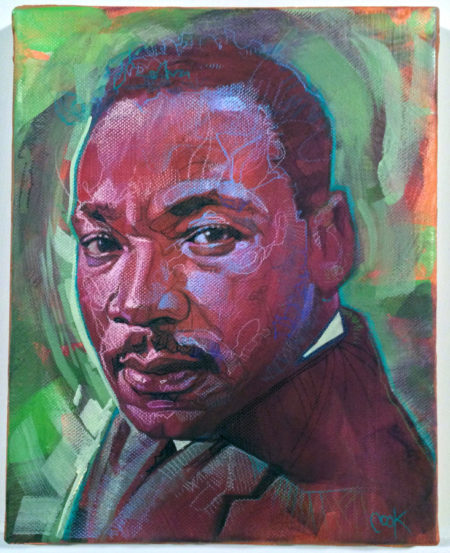
Free at last
By Bud Cook $225 $225 Read more -

Furiosa
By Bud Cook $450 $450 Read more -

I know
By Bud Cook $425 $425 Read more -

Mills
By Bud Cook $300 $300 Read more -

Videotape
By Bud Cook $300 $300 Read more -

Diplomatic Mission
By Bud Cook $225 $225 Read more -

Darkchamber revisited, #4
By Bud Cook $250 $250 Read more -

A voice that came from you and me
By Bud Cook $225 $225 Read more -
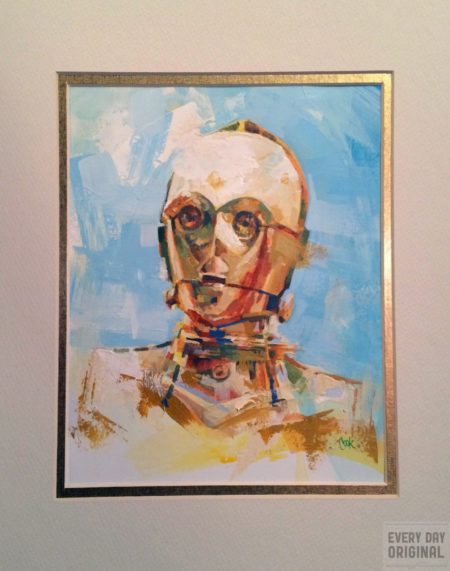
Etiquette and Protocol
By Bud Cook $175 $175 Read more -

This Serious Moonlight
By Bud Cook $150 $150 Read more -

Darkchamber revisited, #2
By Bud Cook $250 $250 Read more -

Darkchamber revisited, #1
By Bud Cook $250 $250 Read more
's EDO GALLERY
[fbcomments num=”50″ countmsg=”wonderful comments!”]







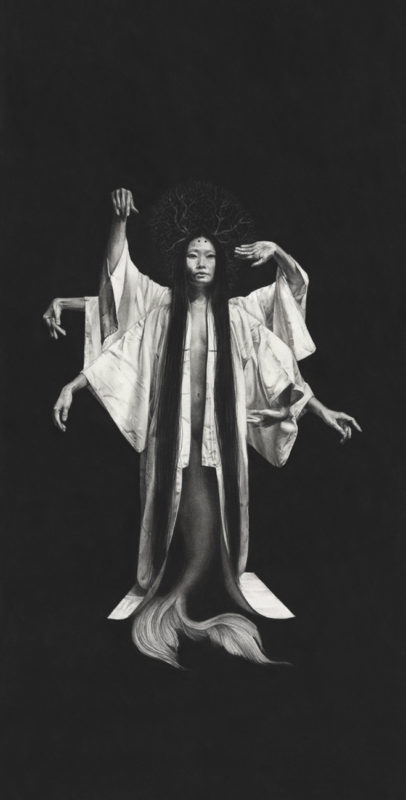 10. On your website you mention returning to your roots in LA, studying abroad in Italy, and living in various US cities. How has this travelling influenced your outlook creatively and personally?
10. On your website you mention returning to your roots in LA, studying abroad in Italy, and living in various US cities. How has this travelling influenced your outlook creatively and personally?




























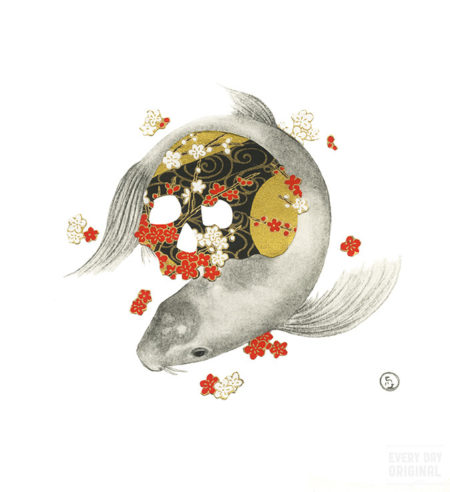













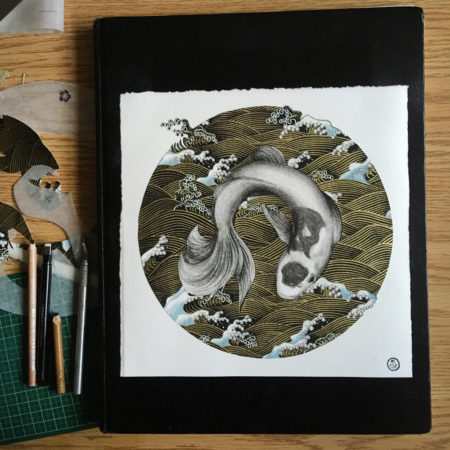



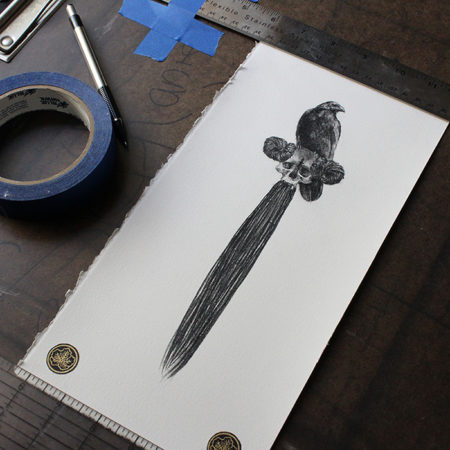











 9. You work focuses alot on the figure and detailed anatomy. What draws you most to the human figure, and what does it communicate in your work?
9. You work focuses alot on the figure and detailed anatomy. What draws you most to the human figure, and what does it communicate in your work?







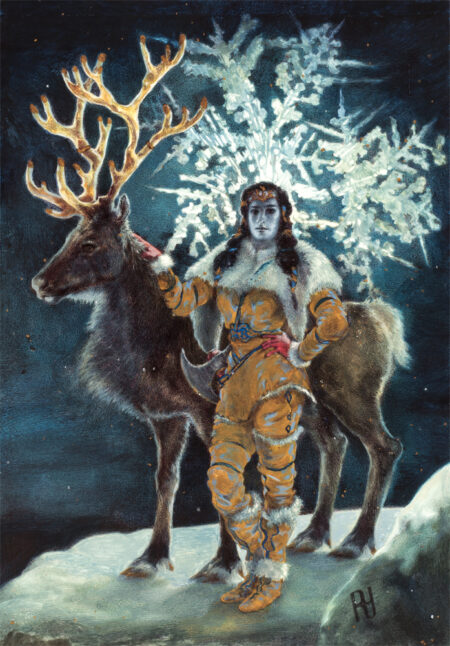



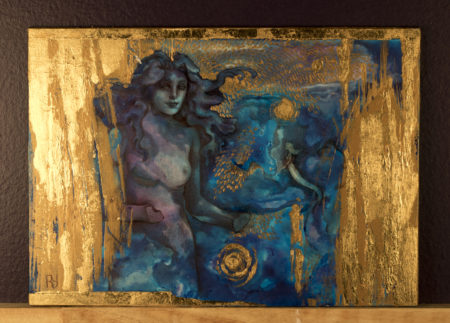
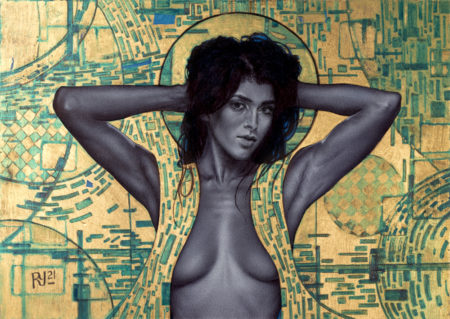


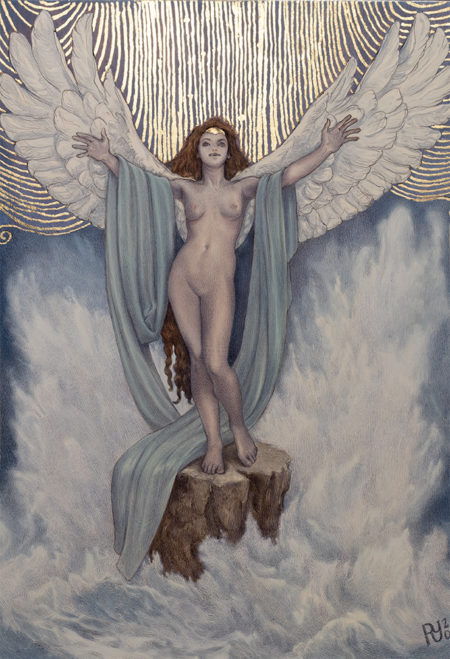





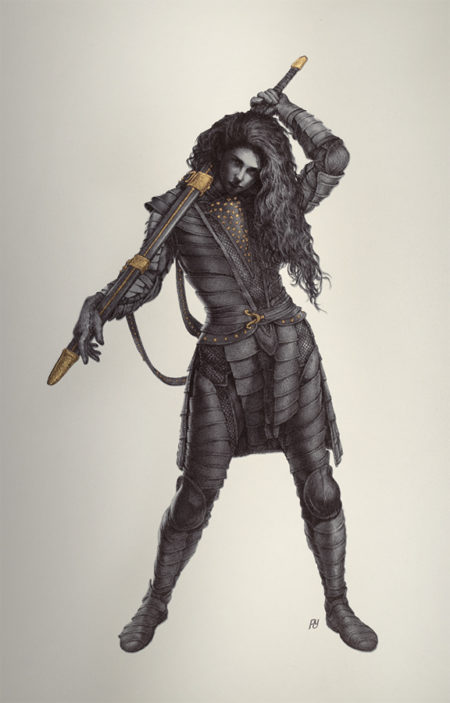


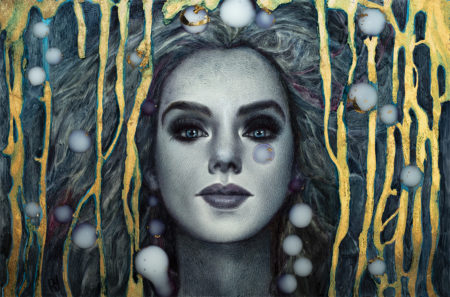


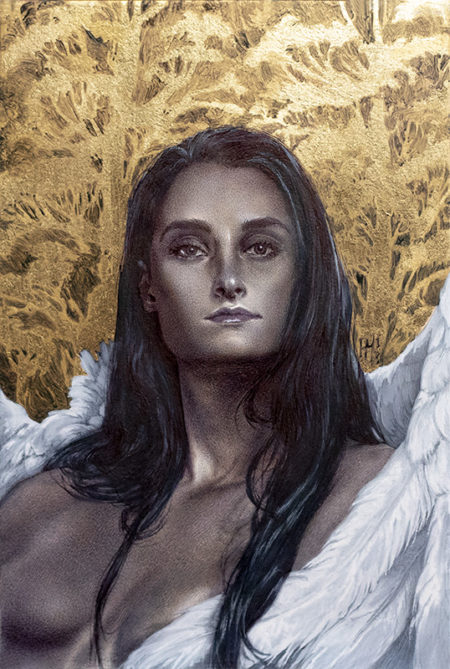
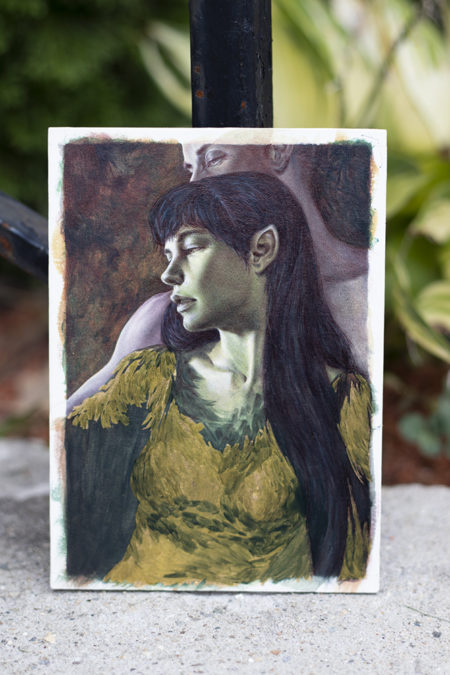


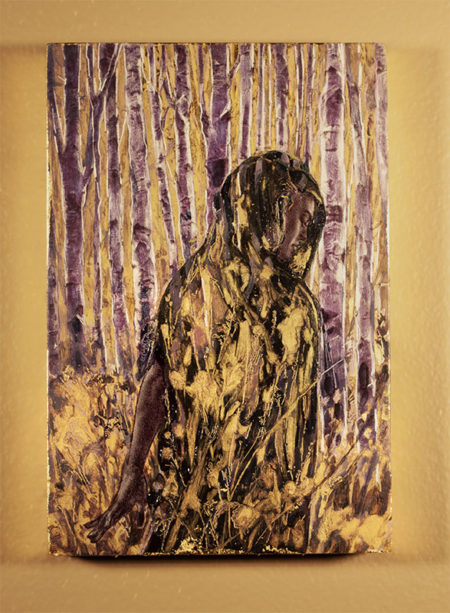
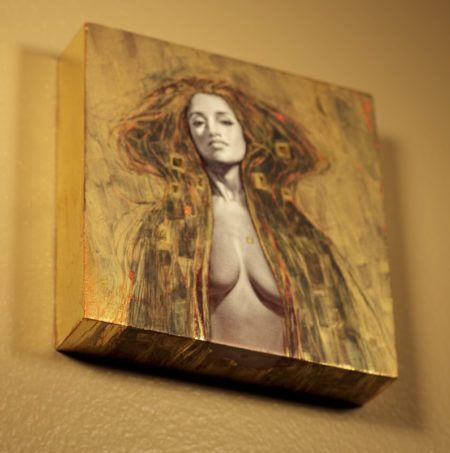



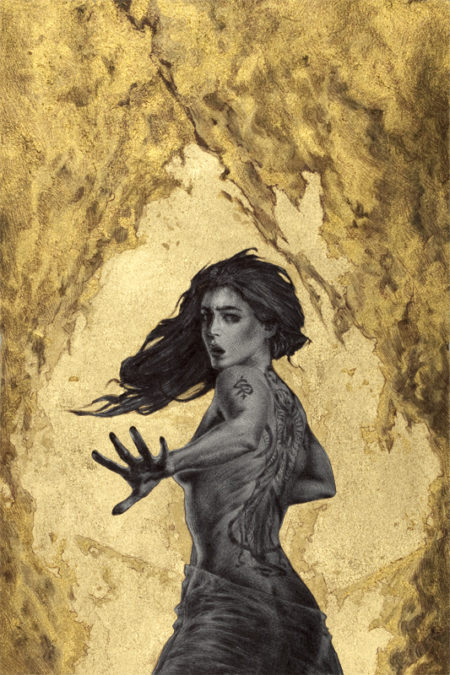
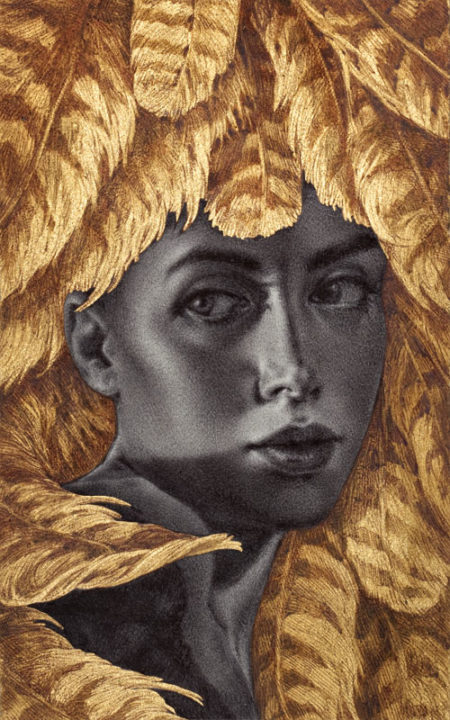

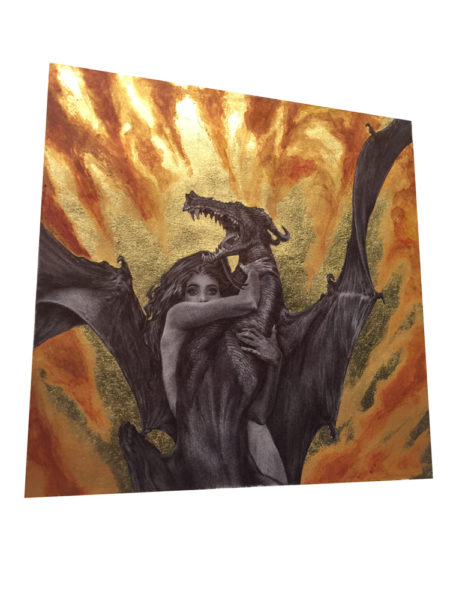

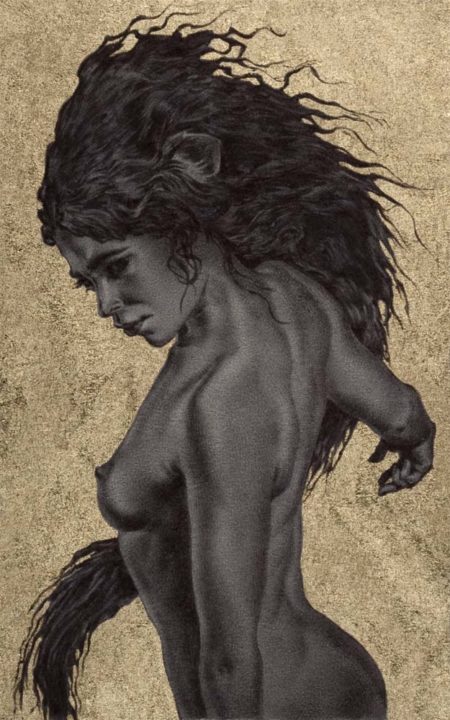
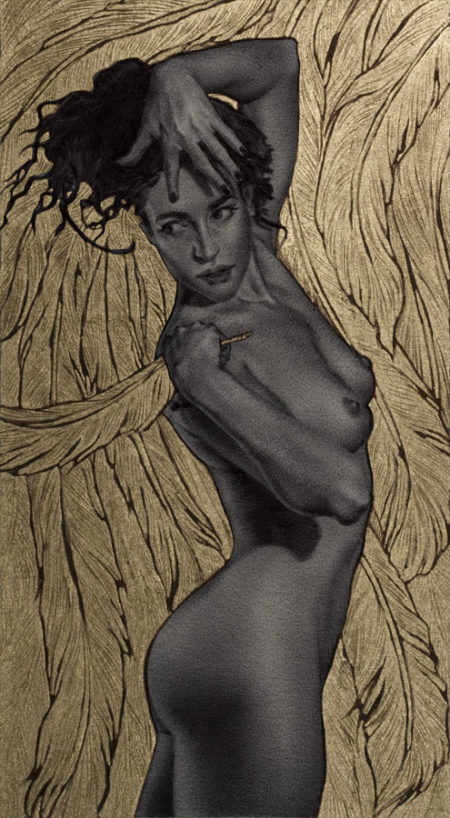




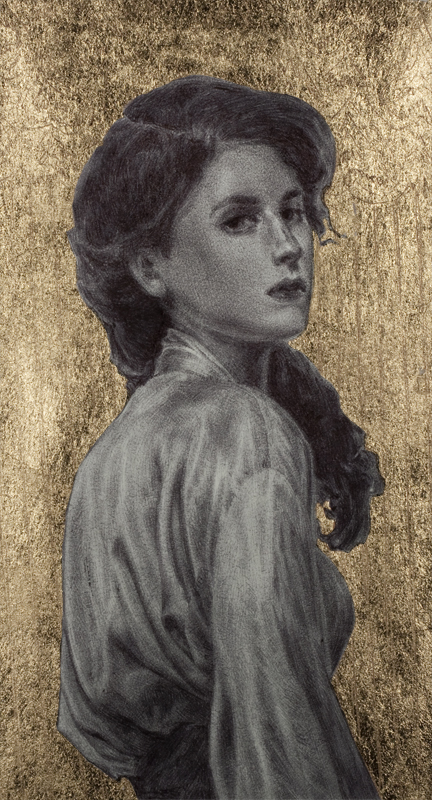





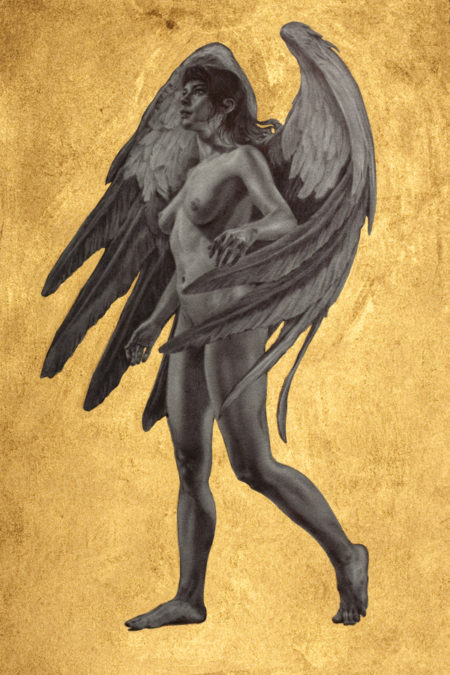



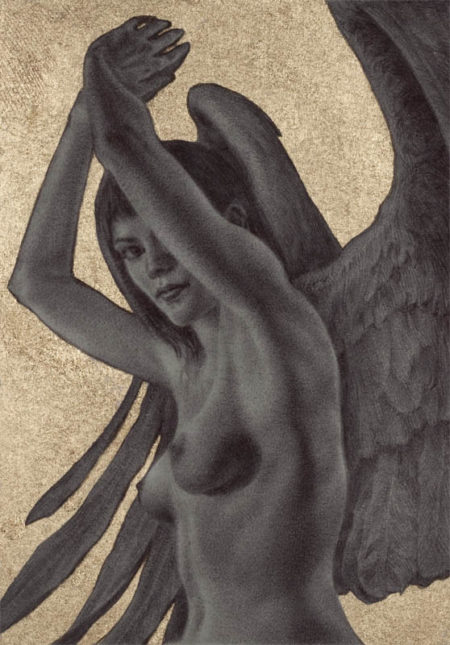





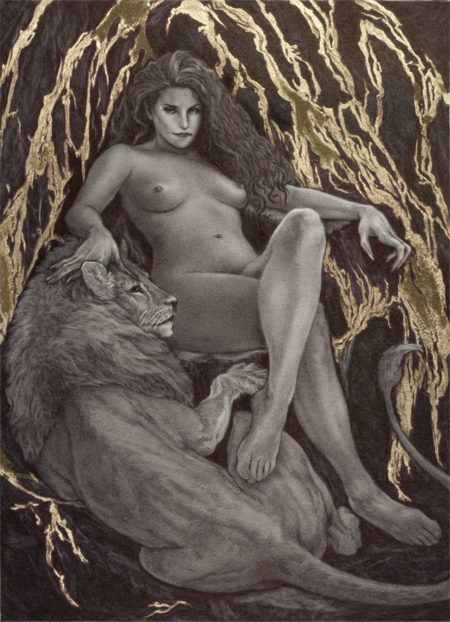


















 3. If I recall correctly, you were initially a very polite “no” to the invite to Every Day Original. What was your hesitation? What changed your mind?
3. If I recall correctly, you were initially a very polite “no” to the invite to Every Day Original. What was your hesitation? What changed your mind?
 10. Is using color something that comes naturally to you, or something you struggled and worked up to?
10. Is using color something that comes naturally to you, or something you struggled and worked up to?






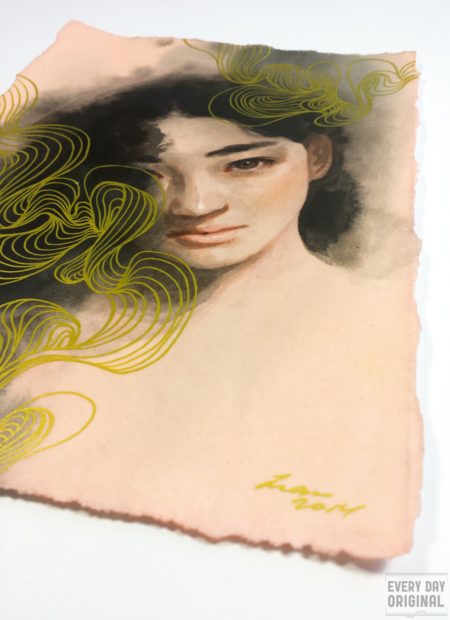

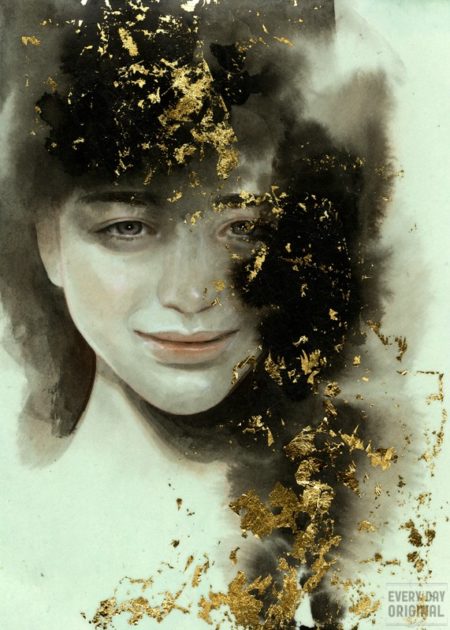
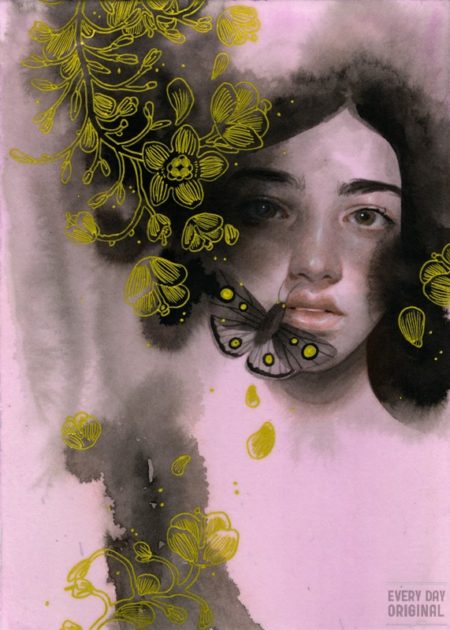


 4. Jane McGonigal, noted game/social scientist/researcher/designer, in
4. Jane McGonigal, noted game/social scientist/researcher/designer, in 
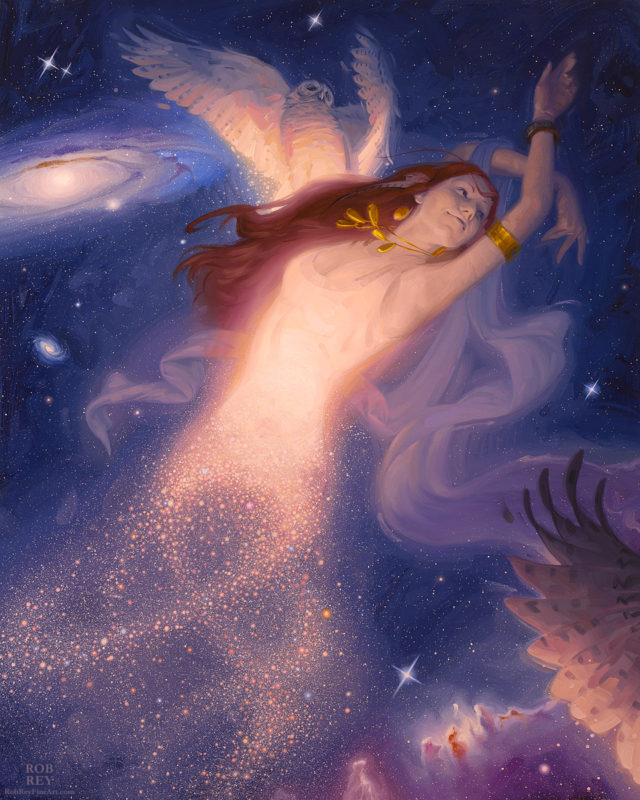 12. You have an incredible work ethic. There’s this romanticized idea of the fine artist/illustrator working around the clock year-round eschewing social contact and just creating creating creating. However, there’s plenty of research showing the important of breaks, even short ones to move around, go for a walk, see the sun. What’s a typical work day for you? What kinds of things do you do to rest the mind and brushes?
12. You have an incredible work ethic. There’s this romanticized idea of the fine artist/illustrator working around the clock year-round eschewing social contact and just creating creating creating. However, there’s plenty of research showing the important of breaks, even short ones to move around, go for a walk, see the sun. What’s a typical work day for you? What kinds of things do you do to rest the mind and brushes?






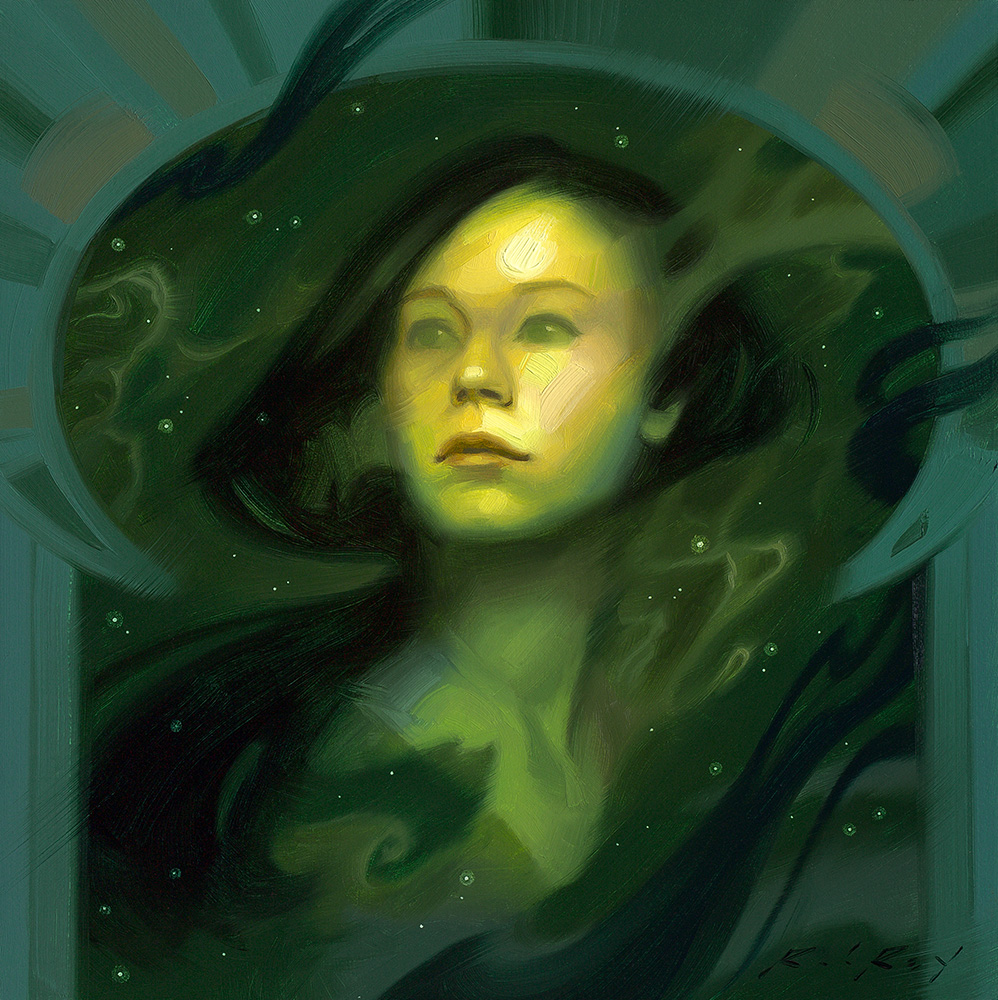

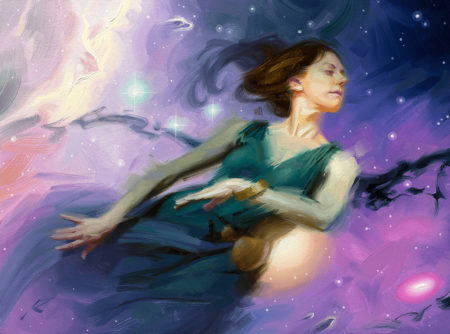

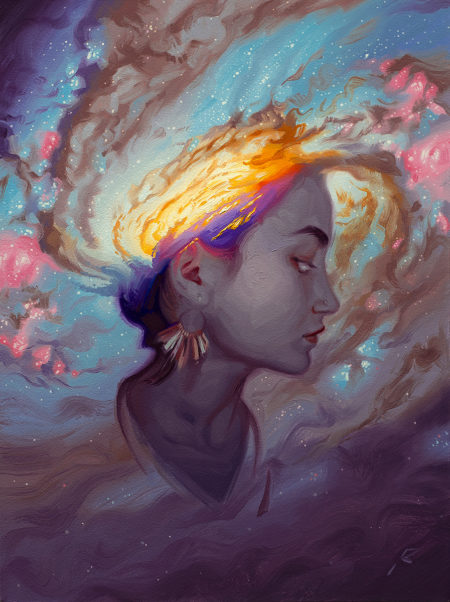




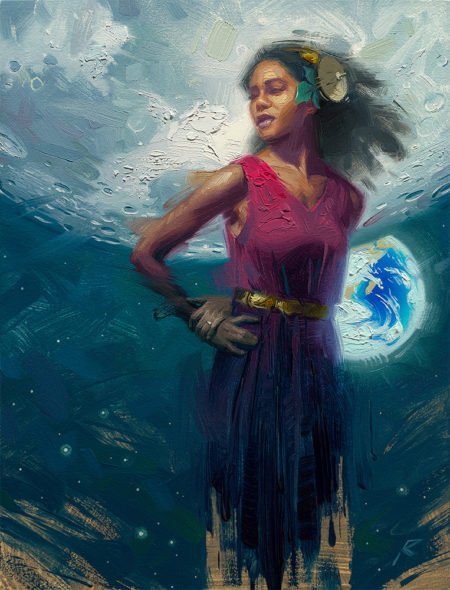



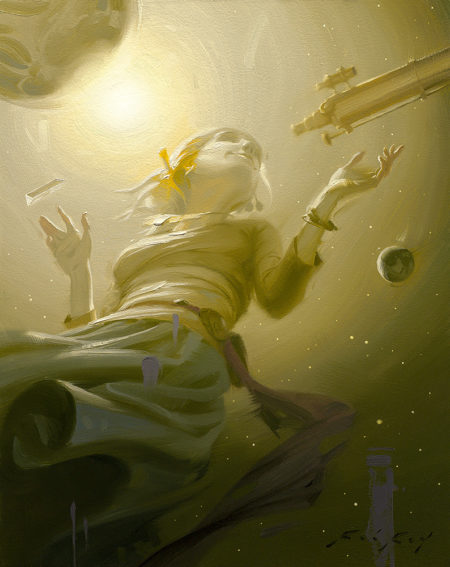



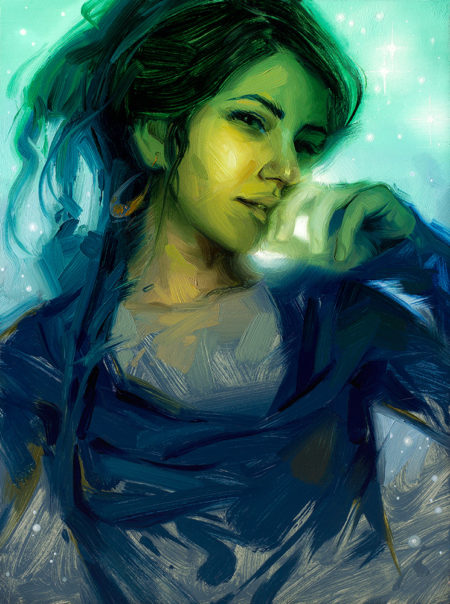






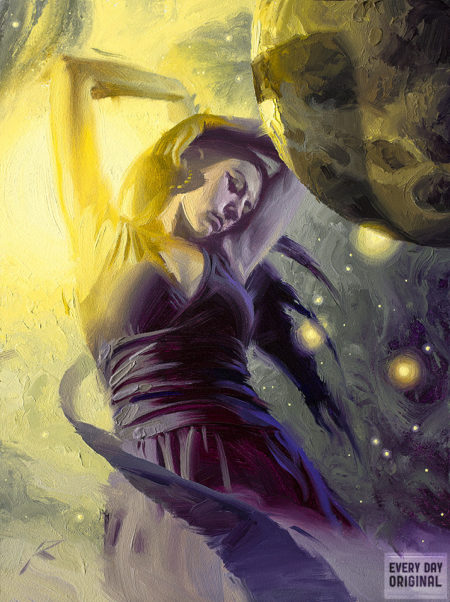
















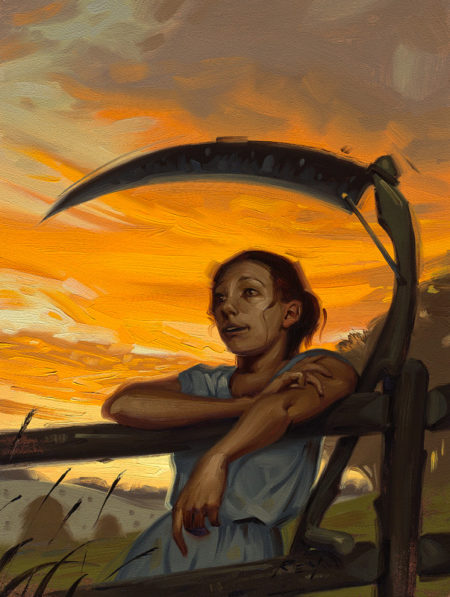


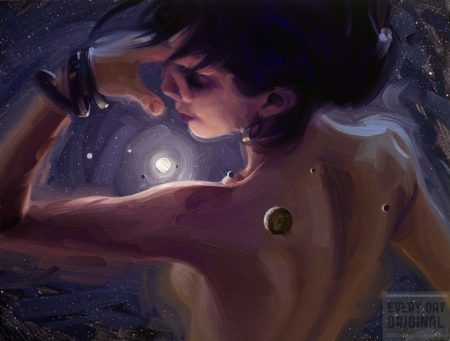








 3. You are making a transition now from gallery work to illustration. Is it correct to call it a transition or are you simply expanding? Tell us why the move and/or expansion?
3. You are making a transition now from gallery work to illustration. Is it correct to call it a transition or are you simply expanding? Tell us why the move and/or expansion? 8. Rather than ask how you price your work, we would love to know how you budget your money and time. Do you have a goal salary and work to make enough work to fill that number? How do you approach the business of being an artist?
8. Rather than ask how you price your work, we would love to know how you budget your money and time. Do you have a goal salary and work to make enough work to fill that number? How do you approach the business of being an artist? 12. Your work focuses heavily on the female figure, often inside a narrow set of archetypes (visually and narratively). Is this a conscious decision to represent this specific type of woman, or do you just naturally favor this imagery in your paintings/illustrations? Is there a narrative you have about how you portray women?
12. Your work focuses heavily on the female figure, often inside a narrow set of archetypes (visually and narratively). Is this a conscious decision to represent this specific type of woman, or do you just naturally favor this imagery in your paintings/illustrations? Is there a narrative you have about how you portray women?






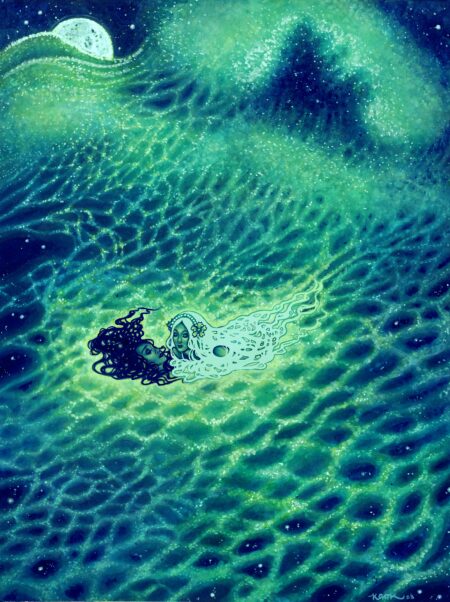








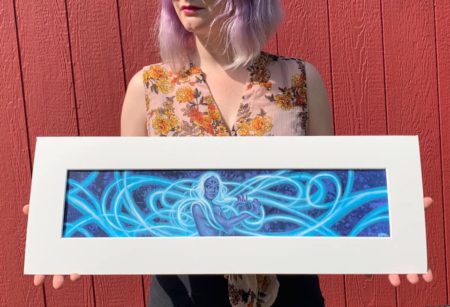


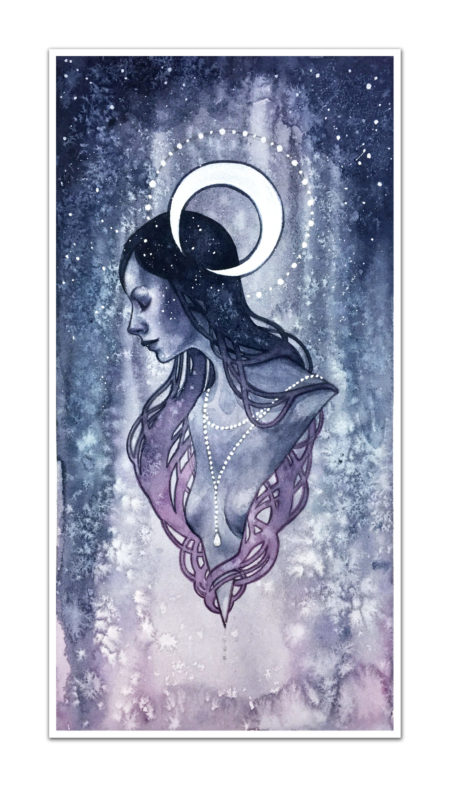




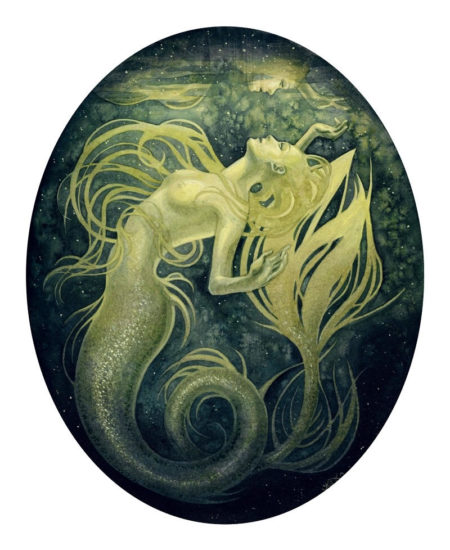

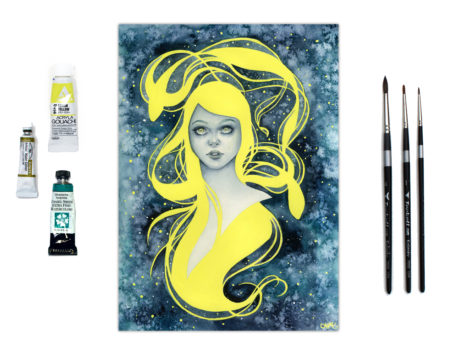

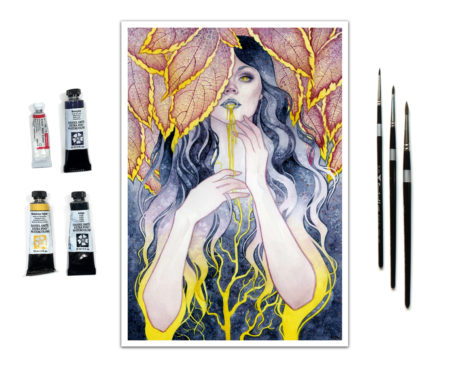
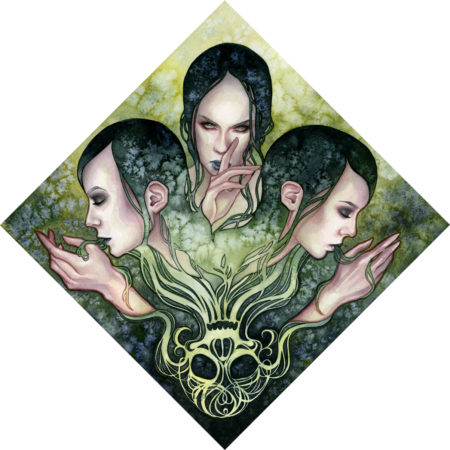














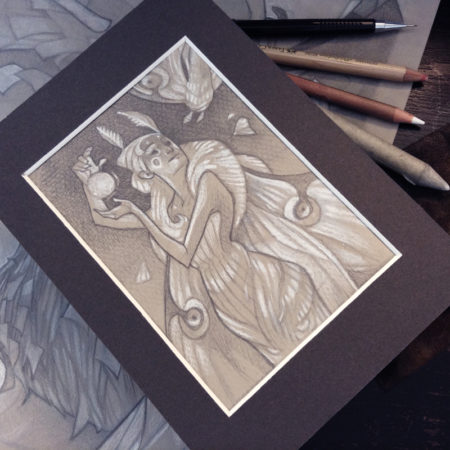





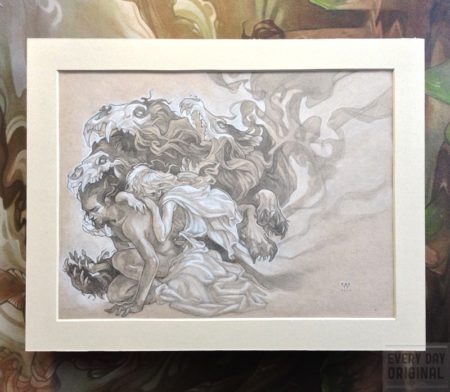












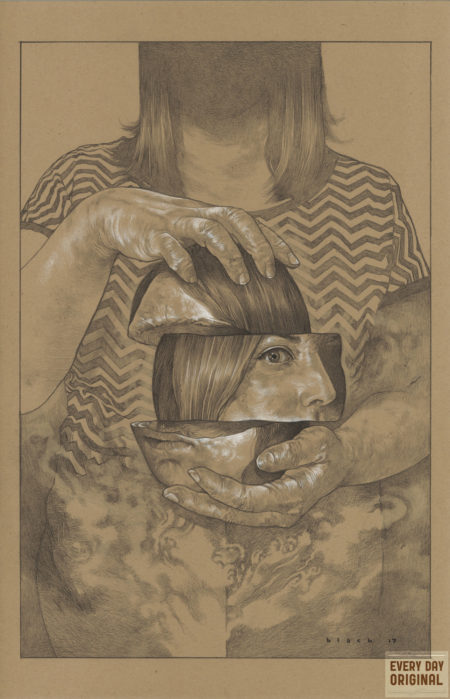






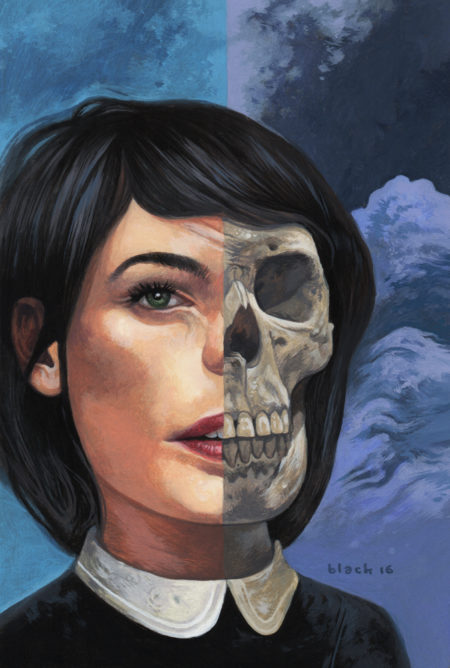
















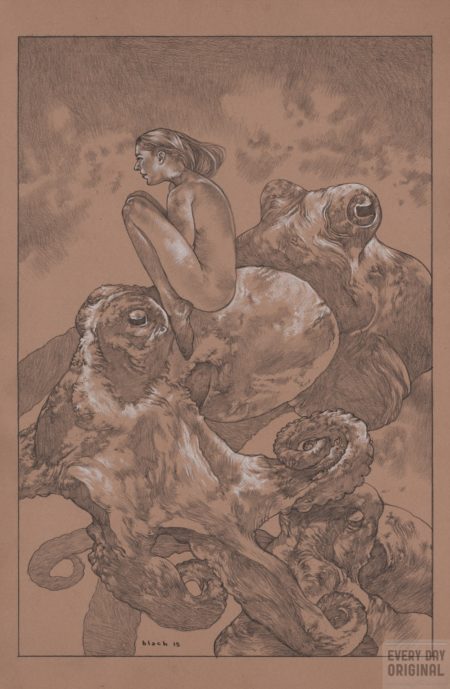








 8. Freelancer’s are understandably protective of their time, why start a project that features other people’s work?
8. Freelancer’s are understandably protective of their time, why start a project that features other people’s work? 13. How do you stay sane and keep from burn-out?
13. How do you stay sane and keep from burn-out?